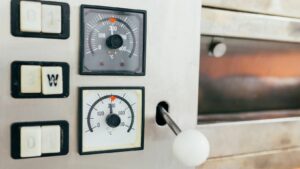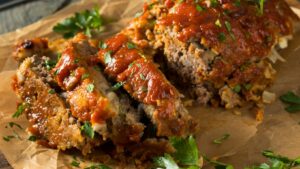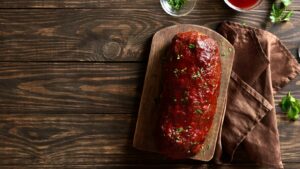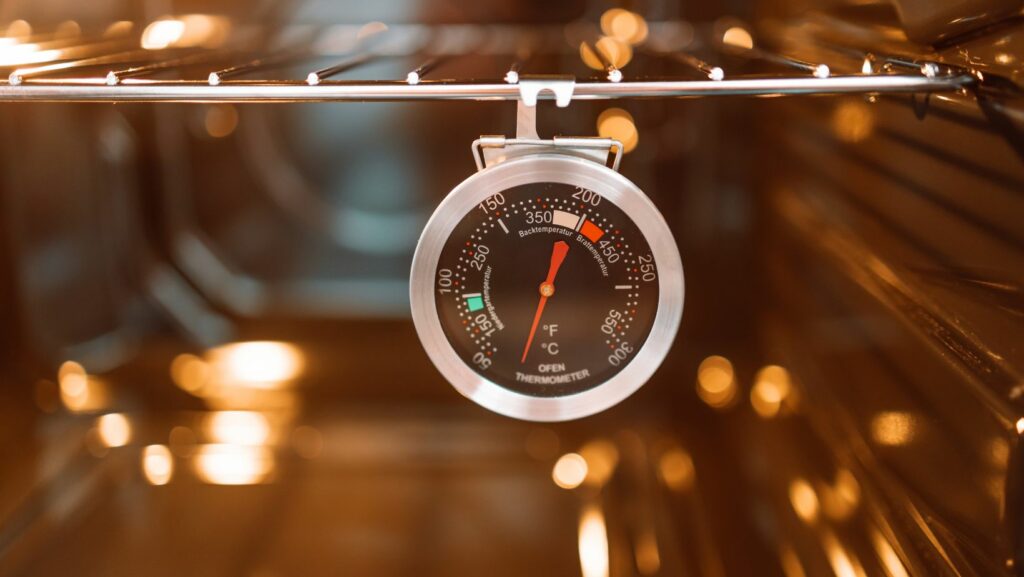Perfecting a meatloaf recipe is an art. But, it’s not just about the ingredients you mix in; it’s also about cooking it at the right temperature. Ensuring your meatloaf is cooked to the proper temperature is crucial for both taste and safety.
Understanding the science of cooking temperatures can transform your meatloaf from mediocre to magnificent. This article will delve into the ideal temperatures for cooking meatloaf, helping you avoid a dry, crumbly dinner disaster or a health risk from undercooking.
Cooking Temperatures for Meatloaf

It’s crucial to grasp basic cooking principles for meatloaf. First, preheating the oven to the correct temperature, generally 350°F (175°C), ensures even cooking. Second, mixing and shaping the meatloaf affects its texture. Overmixing, for instance, may lead to a dense, tough meatloaf. Third, using a loaf pan aids in retaining moisture and encourages uniform browning. Lastly, a properly calibrated kitchen thermometer provides accurate readings. A safe internal temperature reading for a cooked meatloaf, according to the United States Department of Agriculture (USDA), stands at 160°F (71°C) for ground beef, veal, and lamb, and 165°F (74°C) for ground turkey and chicken.
Recommended Cooking Temperatures
Given the earlier discussions, one can ascertain that correct temperatures play a pivotal role in cooking a perfect meatloaf. As per USDA guidelines, cooking the meatloaf to an internal temperature of 160°F (71°C) guarantees not only palatability but also safety. To achieve this, preheat your oven to 375°F (191°C). A consistent oven temperature ensures an evenly cooked meatloaf.
More importantly, use a reliable meat thermometer for precision. Insert it into the center of the meatloaf, being conscious not to touch the bottom of the loaf pan, as it can give an inaccurately high reading. Following these steps and employing a resting period of 10 minutes post-cooking enables the redistribution of juices and enhances the overall taste of the meatloaf. Each recipe might have slight variations, but these are generally accepted measures involved in cooking a meatloaf to the recommended temperatures.
Methods for Measuring Temperature

A precise measure of meatloaf’s internal temperature determines its perfect readiness. A kitchen thermometer’s use, either digital or ovenproof, becomes a key tool to obtain the culinary precision. For an accurate reading, make sure to insert the thermometer into the thickest part of the meatloaf, avoiding any contact with the pan or oven. Ovenproof thermometers, being kept inserted in the meatloaf during cooking, provide a continuous temperature reading, ensuring it’s cooked just right.
A digital instant-read thermometer, however, calls for intermittent checking. Although they offer quicker readings, it interrupts the cooking process, opening the oven door multiple times. Therefore, while opting for a thermometer type, keep your cooking style in mind.
Occasionally, for an extra layer of certainty, people apply the visual and touch method. A thoroughly cooked meatloaf feels firm and shows no sign of pinkness inside. However, this method isn’t as foolproof as a thermometer’s usage, leading to potential overcooked or undercooked meatloaf.
Remember, consistency plays a vital role, as fluctuating oven temperatures may disrupt the cooking result. Thus, rely mainly on the thermometer readings for avoiding any food safety concerns.
Common Mistakes to Avoid

Navigating the art of cooking meatloaf isn’t always straightforward. It’s easy to overlook the importance of the right oven temperature or neglect the use of a reliable kitchen thermometer. Remember, preheating your oven to 375°F and ensuring your meatloaf reaches an internal temperature of 160°F is key to achieving a delicious and safe-to-eat meal. Don’t rush the process; allow your meatloaf to rest once it’s out of the oven. This enhances the flavor and makes for a more enjoyable eating experience. While the eye test and touch method can provide additional checks, they’re not foolproof. Trust in your kitchen thermometer for the most accurate results. Avoid these common pitfalls, and you’ll be on your way to mastering the perfect meatloaf every time.

